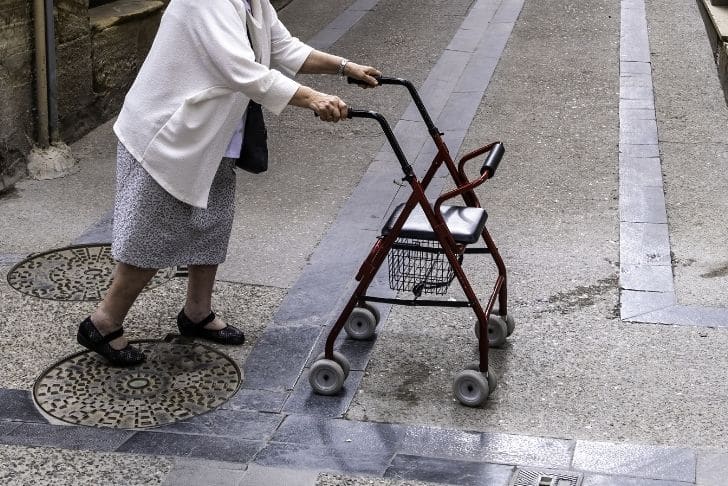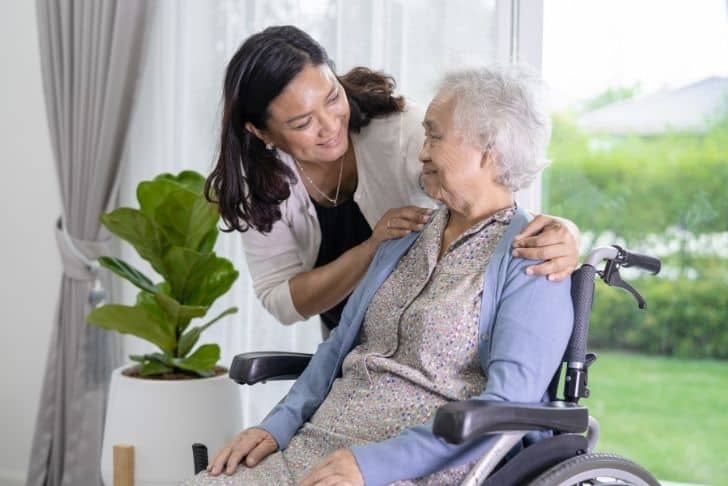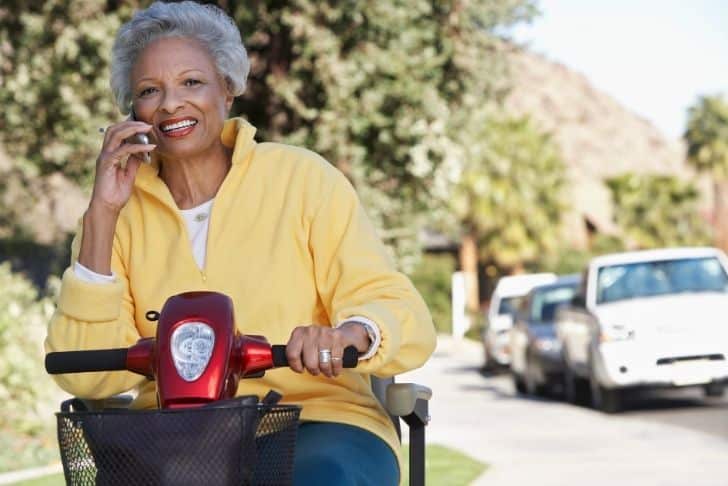Imagine a life where every step you take is filled with uncertainty and fear of potential falls and injuries. As you age or watch a dear family member get older, such mobility challenges can often become a harsh reality. The article “Solutions to Mobility Issues: Aids for the Elderly” tackles these issues head-on, offering a plethora of practical ways to address mobility problems that could plague the elderly. Through exploration of various mobility aids like canes, walkers, power scooters and more, you can acquaint yourself with the tools necessary to ensure a more comfortable and safer way of life. Whether you’re seeking to bolster your own quality of life or trying to ensure the safety of a loved one, this post will shed light on the comprehensive world of senior mobility aids and their invaluable role in keeping you moving, independent, and healthy.

Understanding Mobility Issues in the Elderly
The Impact of Aging on Mobility
As your body grows older, natural physiological changes may occur that impact your ability to move freely and independently. Things like loss of muscle mass and strength, diminished balance, reduced joint flexibility, and overall less energy can contribute to a decrease in mobility. Particular health conditions related to aging, such as arthritis or osteoporosis, can further exacerbate these effects, bringing about aches or pains that may limit mobility.
Common Mobility Problems in the Elderly
Common mobility problems in the elderly include difficulty standing from a seated position, trouble climbing stairs, and challenges with walking. Some people may experience a reduced range of motion, making reaching for objects or bending down hard. Others may deal with symptoms such as dizziness, which can cause a lack of balance and increase the risk of falls.
Effects of Mobility Issues on Quality of Life
Mobility issues can significantly impact an elderly person’s quality of life. Day-to-day tasks can become challenging; this includes getting dressed, preparing meals, bathing, and even simple movements like standing and sitting. Limited mobility might also result in less socializing and can lead to feelings of isolation and a decrease in mental well-being.
The Importance of Senior Mobility Aids
Statistics and Consequences of Falls Among the Elderly
Falls are a serious issue for the elderly, leading to significant injuries and sometimes even death. The Centers for Disease Control and Prevention estimates that one out of every four seniors fall every year. Of these falls, approximately 20% result in severe injuries, including head injuries or fractures, which can lead to long-term mobility issues.
The Role of Mobility Aids in Preventing Falls
Mobility aids can work effectively to minimize the risk of falling, helping to bolster confidence in seniors as they undertake daily activities. These aids can provide balance, support, and increased independence, making the tasks of standing, walking, and navigating around the home or outside a safer experience.
Improving Quality of Life with Mobility Aids
Mobility aids do more than just assist with movement—they can greatly enhance the quality of life for seniors living with mobility issues. They can make it easier to engage in personal care rituals, perform household tasks, attend social gatherings, and participate in physical activities. A mobility aid that’s well-suited to an individual’s needs can help them regain independence and live a more fulfilling life.
Various Types of Mobility Aids
Overview of Different Mobility Aids
There’s a broad array of mobility aids available, ranging from canes to power scooters. The type of aid best suited to an individual depends on their particular mobility issues, fitness level, overall health, and lifestyle.
Factors to Consider when Choosing Mobility Aids
When choosing a mobility aid, you should think about your balance, strength, endurance, coordination, and the type of activities you want to do. It’s also essential to consider the layout of your home and your typical surroundings.
Pros and Cons of Different Mobility Aids
Each mobility aid has its strengths and weaknesses. Canes, for example, are portable and slightly augment stability, but don’t offer significant support. walkers provide excellent stability but can be hard to maneuver. Ultimately, it’s vital to assess your specific needs before choosing a mobility aid.
Canes as Mobility Aids
Types and Styles of Canes
There are various types of canes available, ranging from simple, single-point canes to quad canes with four points of contact. Canes also come in several styles. Some may be plain metal, while others could be carved from wood or even custom-designed.
Ideal Users of Canes
Canes are a good choice for those who require slight assistance with balance and stability. They’re also a popular option for seniors whose mobility is only beginning to decline.
Usage Tips for Canes
While using a cane, it’s crucial not to put your full weight on it, as it might slip. Always keep the cane on the side of your strong leg, and step off with your weak leg.

Walkers for Senior Citizens
Types of Walkers
There are standard walkers and rolling walkers equipped with wheels. Rolling walkers can be easier to maneuver but may not provide the same level of stability as standard walkers.
Appropriate Conditions for Use
Walkers are beneficial for seniors who need a significant amount of support and stability when moving around. Even if it symbolizes a step up in mobility assistance, the increased safety factor can significantly improve peace of mind and quality of life.
Usage Tips for Walkers
You should ensure that you can lift the walker easily and that it fits through the doorways in your home. It’s also important to have the walker at the correct height—your arms should be relaxed and your shoulders even as you grip the handles.
The Use of Rollators
Characteristic Features of Rollators
Rollators, or rolling walkers, are equipped with a set of wheels, handlebars, and often a built-in seat for resting. They are usually lightweight and easy to navigate, but they do require a certain level of balance and upper-body strength.
Ideal Users of Rollators
Rollators are great for seniors who struggle with walking long distances but can maintain balance. They are also perfect for those who need frequent rests during their walks.
Usage Tips for Rollators
Ensure you fully understand the braking system on your rollator before setting off. When you sit down, always apply the brakes and ensure the rollator is stationary.

Power Scooters for Elderly Mobility
Types of Power Scooters
Power scooters come in different sizes, with varying seat types and control systems. Models can be split into three main categories: travel scooters, full-size scooters, and heavy-duty scooters.
Ideal Users of Power Scooters
Power scooters are ideal for seniors who have mobility issues, such as difficulty walking long distances, but who retain upper-body strength and coordination.
Operating Guidelines for Power Scooters
Always check the battery level before you venture out, steer clear of uneven terrain, and use a helmet for safety. Also, ensure your home is suitably arranged to accommodate your power scooter.
Wheelchairs as Mobility Aids
Types of Wheelchairs
Wheelchairs can be self-propelled or pushed by another person. There are also motorized wheelchairs that can be operated independently.
Ideal Users of Wheelchairs
Wheelchairs are best for people who find walking exceedingly challenging or impossible and may require assistance with mobility.
Operating Guidelines for Wheelchairs
If you’re using a manual wheelchair, ensure it’s adjusted to your height and learn the proper arm motions to prevent strain or injuries. With motorized wheelchairs, you should familiarize yourself with the operations manual, especially the features meant for your safety.
Maintaining Physical Mobility Health
Importance of Maintaining Physical Mobility
Maintaining physical mobility can help improve balance, strength, and flexibility, which will help you manage tasks of daily living better and maintain your independence.
Activities for Improving Senior Mobility
Activities like low-impact exercises, stretching, balance and coordination exercises, and walking can all help to improve mobility.
Nutrition for Mobility
Diet also plays a crucial role in preserving mobility. A healthy diet rich in lean proteins, vegetables, fruits, whole grains, and healthy fats can help maintain muscle strength and bone health.
Government and Charitable Support for Mobility Aids
Medicaid Programs for Mobility Aids
Medicaid and other government programs offer support to seniors who need mobility aids. They may cover part or all costs related to purchasing or renting aids.
Charitable Organizations Offering Support
Various charities, such as local senior care charities, often help seniors acquire mobility aids. These organizations support seniors via financial assistance, donation drives, and equipment lending libraries.
How to Apply for Support from Government and Charitable Organizations
Reach out to the relevant government agencies, or your local senior center, for information on how to apply for aid. It’s also worth contacting any charity organizations in your area that provide such assistance.
